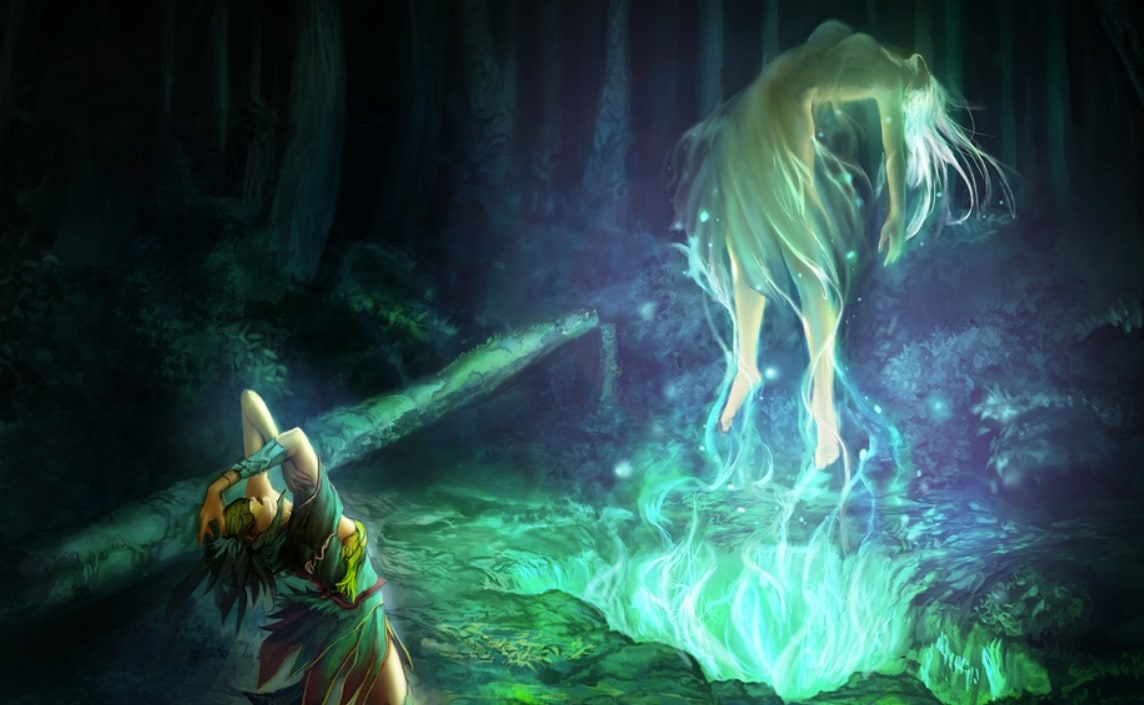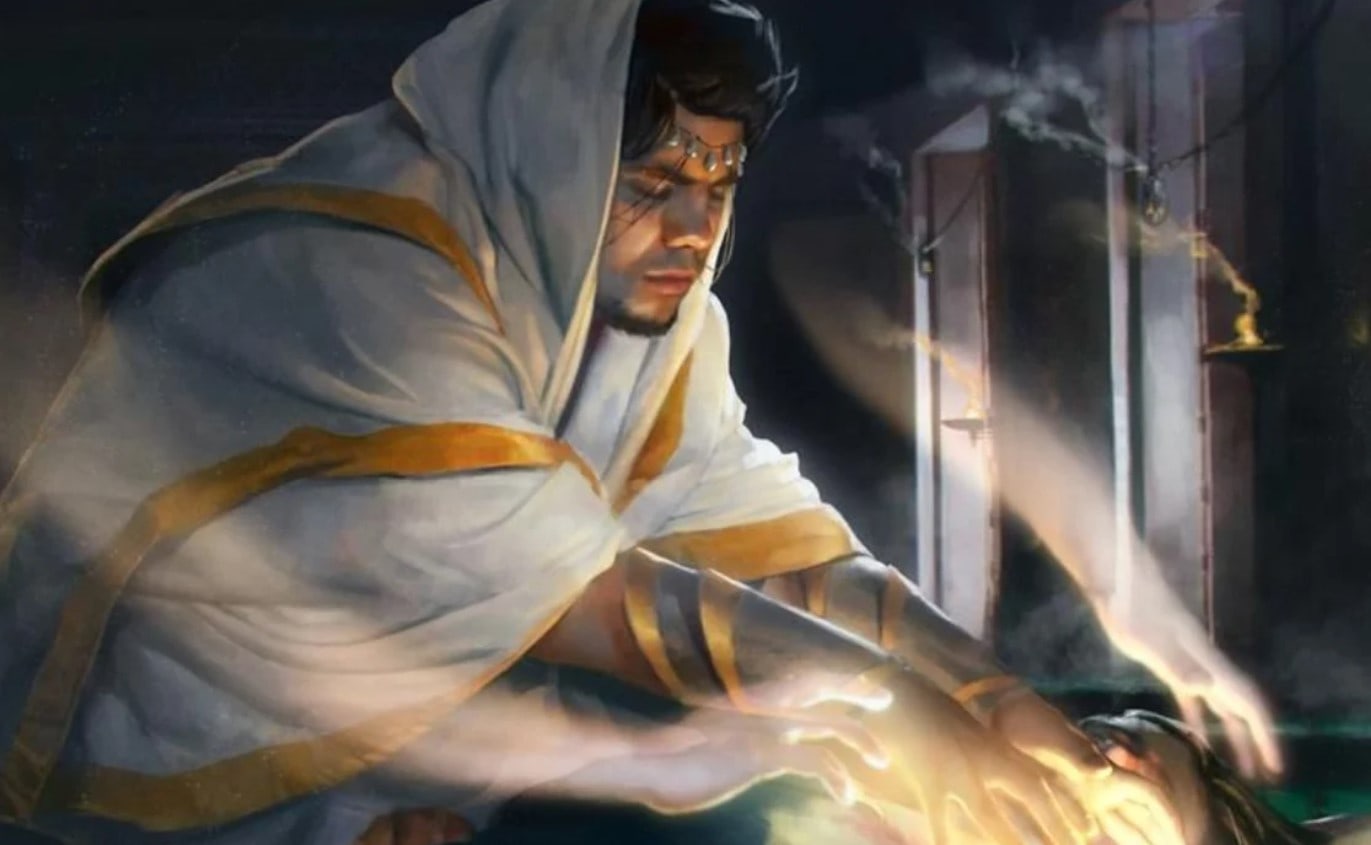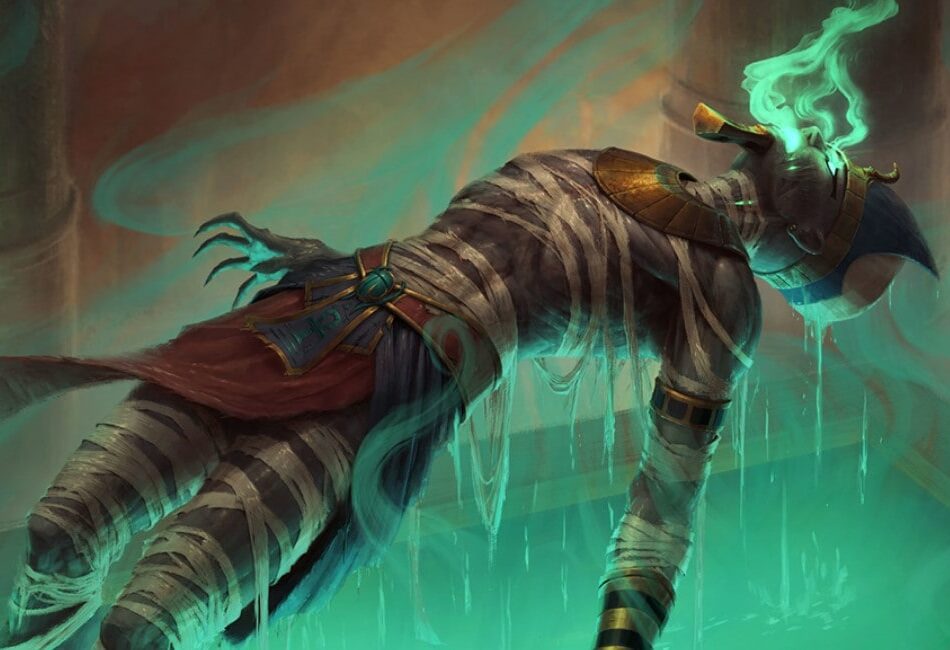Life and death can be difficult concepts for any D&D party to deal with. They are often heavy topics that require careful handling. Yet when it comes to D&D spells like the spell featured in this Resurrection 5e guide, they often extend beyond the boundaries that the deities put in place to keep the dead and the living separate. Those boundaries are often violated, but when they are broken, their targets generally come back as Undead.
Spells like Resurrection breach these boundaries and expectations, bringing their targets back to the land of the living with coaxing and one very, very expensive diamond. Although the actual balance of the spell is dubious at best, it puts into perspective just how powerful adventuring parties can be and why they can be such a threat to the deities above.
Living Life in the Fast Lane
- 7th-level School of Necromancy Spell
- Components: VSM (One diamond worth at least 1,000 gp)
- Casting time: 1 hour, Instant duration.
- Resurrect someone who has died within the last century, has not died of old age, and isn’t considered Undead. It gives the target -4 on all rolls, with that penalty decreasing by one with each long rest.
- Requires the caster to take a long rest after casting before they can spend more spell slots.
- Available to Bards and Clerics
How it Works

Found on page 272 of the Player’s Handbook, Resurrection is a 7th-level Necromancy spell. Resurrection takes one hour to cast, requiring Verbal, Somatic, and a single Material component. The spell requires a diamond worth at least 1,000 gold pieces and consumes that diamond upon use.
Resurrection can only be used on a creature that has been dead for no longer than a century, has not died of old age, and isn’t considered Undead. The target is healed of all their wounds, and any body parts that were previously missing are back where they should be. If their soul is free and willing to return, the target will return to life with all their hit points restored.
There is a downside to Resurrection, however. While you can keep your party members around longer, making death “no big deal,” the spell has its drawbacks. After being resurrected, the target has a minus four penalty for all their attack rolls, saving throws, and ability checks.
This penalty is reduced by one with every long rest, but that is still about four days. I wouldn’t recommend using Resurrection just before a fight unless necessary. Have your party take a long, long rest and take some time off for everyone to recuperate and be at their best.
Another downside to Resurrection affects the caster directly. Whoever casts Resurrection cannot cast spells again until they finish a long rest. They also gain a disadvantage on all their attack rolls, ability checks, and saving throws.
So, for the sake of your caster and your newly resurrected party member, just take some time off. This downside only makes it an even worse idea to cast Resurrection before entering a big fight or any kind of fight, truly.
Why is it Necromancy if it’s healing?
For those who are new to Dungeons and Dragons, you likely don’t associate Necromancy with healing and would, instead, associate it with something like Divine magic. In terms of Dungeons and Dragons, magic originating from the School of Necromancy deals with life and death.
The two go hand in hand, and as such, it often requires the same type of magic. This won’t affect your actual gameplay unless, of course, you’re attempting to revive an undead creature. Creatures that are undead are generally Immune or, at the very least, Resistant to Necromancy and Necrotic Damage.
How it Can’t Work

Although I mentioned briefly that you could not use Resurrection if your target did not meet certain conditions, there are a few other ways this god-like spell can’t work—specifically with the Material component. Resurrection requires a single diamond worth 1,000 gp, which will likely prove harder to find and obtain than not throughout your games.
When I played my first Cleric, I thought I had a clever loophole: collect diamond dust or multiple diamonds. Unfortunately, that’s not how the spell works, and I was stopped in my tracks quickly.
Resurrection requires, specifically, a single diamond worth an inflexible price. This diamond is consumed and cannot be replaced by multiple diamonds or powdered diamonds. The biggest reason for this inflexibility is because it is supposed to give more weight to the idea of death and Resurrection. It is not a spell you can cheaply access or find workarounds with.
Were Resurrection worth only a handful of cheap diamonds, I doubt there would be nearly as much intimidation with the concept of death in the later game. Of course, if your party has pockets overflowing with Gold and Platinum, this may not be that grand of a deal to them, but how many shops would actually have a 1,000 gp diamond just sitting around? The rarity of the Material components to this spell is what gives death the weight it has and what makes this spell so costly. You can sleep off the penalties, but you don’t see a diamond worth 1,000 gold pieces daily.
If you’re fighting a Lich and attempting to “kill them off” or make them alive again so you can subsequently kill them off, I am, unfortunately, about to burst your bubble. Resurrection will not work on a creature considered Undead (which Liches are). Moreover, I don’t know how you would get a Lich to stay still long enough that you can keep your hand on them for an hour to properly cast the spell. Instead, just use divine magic to target your Lich enemy. Depending on how your Dungeon Master runs your game, it’s probable that Liches are susceptible to divine magic.
Let’s assume the Lich isn’t a problem anymore, but what is a problem is that the Lich has disintegrated your wizard or some other party member. This is a bit of a problem because you would really like them back (I would hope). Can you theoretically use Resurrection to bring your disintegrated party members back to life? No. You can’t. I am very sorry but you cannot. You will need access to True Resurrection or Wish to do this.
Read more about how Disintegrate works in DnD 5e.
Resurrection requires at least some of a body available, even if it isn’t entirely in one piece. When you are tiny granules of ash, there is no body anymore, not even Resurrection can form one from that pile. I’m very sorry to burst this bubble. Try visiting your local temple, and they might be able to help.
Who Has Access to Resurrection?
Bards and Clerics are the lucky ones who gain access to Resurrection. Under the will of their chosen Deity or the warping of reality under the sheer audacity of their presence, these are the only classes that can bring their comrades, or others, back to life. Both classes gain their first seventh-level spell slot at level 13. At this point, you should be able to collectively afford a diamond for Resurrection, so I heavily recommend investing.
Considering that the diamond could be used on anyone at any point in the future, hopefully in the distant future rather than the near future, I would argue that it should be a party investment. Let your Clerics (and Bards) save their money for the fun stuff. They already have to conserve their high-level spell slots to save the ones without self-preservation instincts all the time.
Getting Creative

This spell is pretty cut-and-dry with what it entails and needs, so it may initially seem difficult to get creative. In the standard Player’s Handbook, the spirit only has to be willing to return and not trapped for the spell to work.
But, Critical Role has taken it in a different direction, giving more tension to the spell and more weight to the concepts of life and death.
Even though this spell can be rather morbid and difficult for players to deal with, there are ways to have at least a tiny bit of fun with it.
Life is not Infinite
The first unique twist that Critical Role takes on the concepts of Life and Death and resurrecting spells is the idea of a Death DC. The base DC is 10, increasing by one every time a creature or character dies. When a caster is using a spell to bring the target back to life, they need to make a check to exceed the DC.
The target doesn’t immediately leave reach, but a spell requiring a casting time longer than one action is needed to bring the target back. Revivify is one of the spells that require the caster to roll against the Death DC, but on a failure, that DC is raised by one.
Ritualistic Resurrection
With the Resurrection spell, Critical Role has turned it into a ritual spell, requiring up to three creatures to contribute to call back the target’s soul. Depending on what the creature is doing to call their target (and hopefully friend) back to the Material Plane, they must make an appropriate ability check against a DC determined by the DM. For each successful check, the Death DC is lowered by 3 for the current ritual. Each failure results in a Death DC increase of 1.
The DM will make the final roll against the DC, and on a success, if willing, the creature’s soul is returned to their body. On a failure, their soul is lost, and all future Resurrection spells will automatically fail. Only spells like True Resurrection or Wish can bypass the ritual and previous failures. Or, as was the case with Campain 2, Divine Intervention can completely bypass the ritual or need of any spell components.
While you don’t have to follow Critical Role rules, they undoubtedly add a more profound emotion to the concepts of life and death and require that you genuinely know the party members that you are attempting to bring back. You call them back with personal mementos, memories, and performances, showcasing your bond and how you don’t wish to lose that. The more personal and intimate, the lower your Ability Check DC is likely to be.
Is it Actually Too Powerful?

Yes and no. Depending on how your players are set up in the game and how you’ve formatted everything, Resurrection can be an easily attainable spell, or it can be difficult to get their hands on.
I’ve read about a lot of Dungeon Masters and Players who have considered outright banning Resurrection from their games under the premise that it would have too much of an impact on the world building at large or that it just doesn’t give the campaign the same amount of weight to it. If you can never die, there’s not much weight to staying alive and not rushing into battle.
Dungeons and Dragons 5e is by no means a balanced game, but the game’s beauty is that it is flexible and can shift to fit the mood of your table or the desires of your group. If you agree that Resurrection is too powerful, you don’t have to leave it as is. The rules are whatever you want them to be, and Wizards of the Coast can’t stop you.
FAQ
Question: How much of a body do you need for Resurrection 5e?
Answer: Although it is up to your DM, I would argue that you need enough of a body that one could viably survive in it. The spell replaces missing limbs, not necessarily organs. So if you’re missing your head, Resurrection probably won’t work. Probably. But if you were missing a foot or an arm, congratulations, you’re going to have it back.
Question: What if my undead companion dies? Can I bring them back?
Answer: This would heavily depend on your DM and their position on the situation. Like most things with Dungeon and Dragons, rules that aren’t explicit and tend to vary from table to table. Although you can not make an undead creature living again, there is a chance that you could theoretically make them undead again. However, instead of testing it and having a costly diamond end up being wasted, I would just use the spell Raise Dead.
Question: I think that Resurrection is too powerful… should I ban it from my game?
Answer: Hold your horses there, cowboy. Before banning spells that could add a lot of weight to the game and make it more fun for your players, think of ways to balance out the spell first. You’re right; Resurrection is a powerful spell and certainly takes some weight away from the concept of death. But there are ways to balance it to add that tension and help your players keep their self-preservation instincts strong, especially in the late game.
Consider the concept of Ritualistic Ressurection as mentioned earlier in the article, raise the price of the diamond needed, make 1000 gp diamonds harder to find, or require a few diamonds. You have complete control of the game, deciding how accessible or inaccessible the spell is. Still, I wouldn’t take it away completely. This is something to discuss with your players to find out where you all stand on the subject.
Conclusion
This is a very controversial spell that I think most people would probably die for – literally. Many tables believe that Resurrection is just too powerful or unbalanced and consider outright banning it from their games — assuming that it impacts the worldbuilding aspects of their games too much or that it’s just too attainable. I can’t blame them.
Resurrection takes away the fear of death for some players. Where gold is spilling from their pockets and their teeth can easily be replaced by diamonds, with the way that the basic spell is laid out, it only costs 1,000 gold pieces to die and come back to life.
It doesn’t have to be that way, however. Life and death don’t have to have a price tag on them, but with a bit of manipulation and changing how the spell works, it can have an emotional connection so strong that it extends past life and death itself. Or perhaps that price tag is just a little bit more spendy, so it makes characters think twice before they use all of their diamonds without hesitation.
Regardless of whether or not you believe that Ressurection is too powerful or you don’t feel that it is flexible enough, this spell brings a new layer to the concept of life and death in any game and can really help to show just how far your characters would go to keep their friends and family alive.
- Hand Crossbow 5e Guide – For Everyone but Druids and Wizards - December 16, 2022
- Compelled Duel 5e Guide - November 14, 2022
- Heavily Obscured 5e Guide – The Ins And Outs Of The Dark - October 31, 2022

